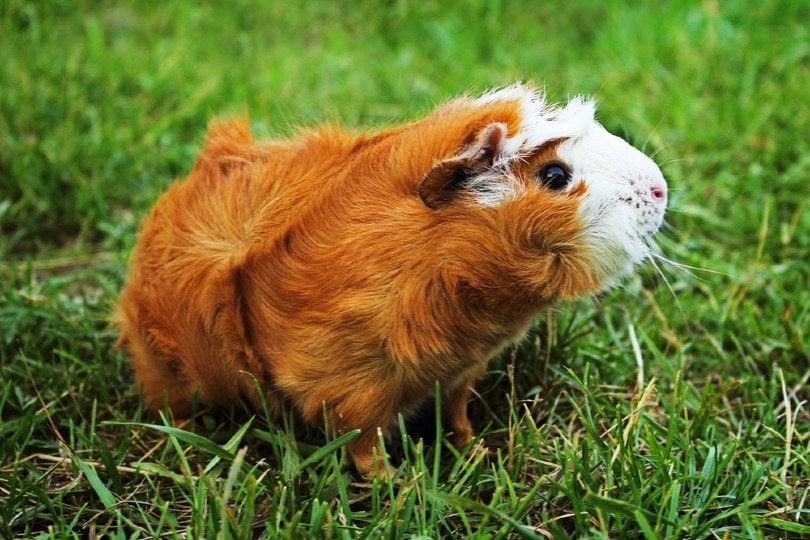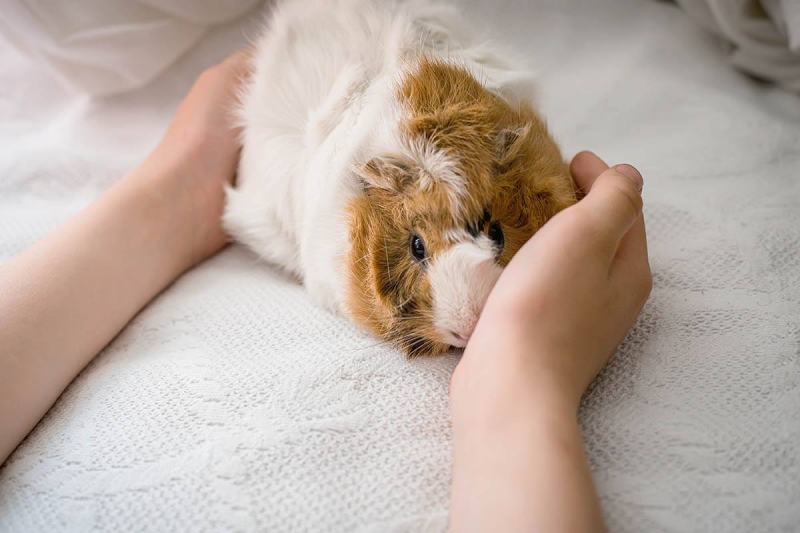How Many Babies Do Guinea Pigs Have in a Litter? Vet-Reviewed Facts & FAQ
Updated on
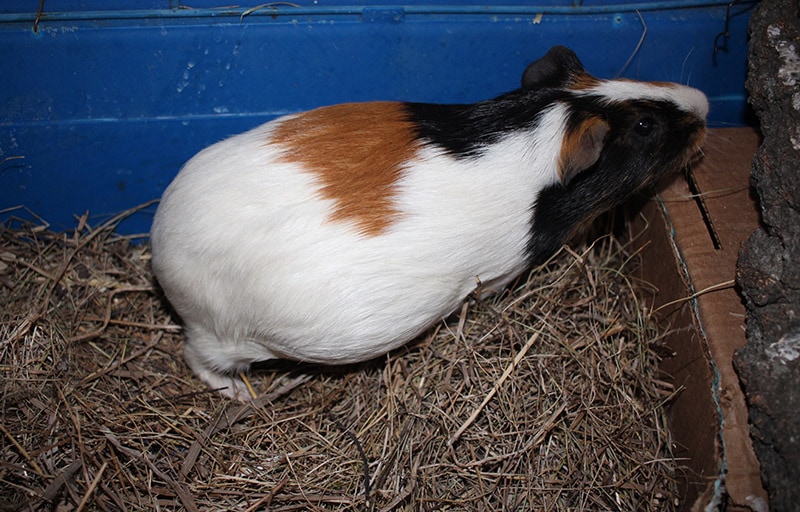
Click to Skip Ahead
If you’ve got a pregnant guinea pig at home, you’re probably wondering how many pups they can have in a single litter. A female or sow can give birth to an average of three to four pups, although litters of up to 13 have been documented! Once the sow reaches sexual maturity, she can produce up to four litters a year.
Sexual Maturity in Guinea Pigs
Females mature before males, going through their first ovulation between 4 to 5 weeks. Males reach sexual maturity around 8 to 10 weeks. They are also polygynous, meaning they mate with more than one female at a time. This all plays a role in the number of babies guinea pigs can have, and their overall reproductive rate, also known as their fecundity.
Females begin breeding around 2 to 3 months old. Males start later at 3 to 4 months old. In the wild, cavies mate year-round, as long as the conditions are acceptable. That makes sense for an animal that lives in a subtropical to tropical climate. The female’s cycle lasts 14 to 19 days, of which she is receptive for only up to a 15-hour stretch.
Their gestation period is 59 to 72 days, which is relatively long for an animal of their size. However, this time span gives the young extra time to develop. The pups are precocial when born, meaning they have fur, they can see and feed themselves from a very early age. Consequently, they don’t spend a long time with their mothers; the average weaning age is only 14 to 28 days.
Sows can come into heat within hours of giving birth, so can be nursing one litter whilst pregnant with another!
Factors Affecting Reproduction
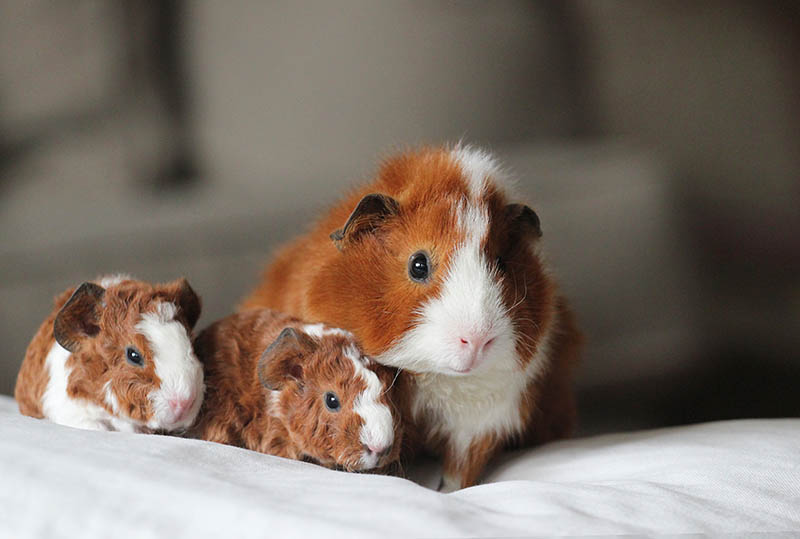
Several factors can affect a guinea pig’s reproduction. Proper housing and nutrition are critical. Cavies don’t tolerate change well, making stability another piece of the puzzle. Centuries of domestication have allowed guinea pigs to adapt to captivity and express less stress than their wild counterparts. This ability undoubtedly plays a significant role in the animal’s reproductive success.
Raising cavies as micro-livestock gives farmers other advantages that affect the number of surviving offspring. Their advanced state of development means that the pups are relatively large. Ergo, the female’s pubic bones have to part to give birth to her young. Calcification of these bones complicates matters, resulting in difficult births and health risks to the young and the mother, who will often require a cesarean.
If farmers ensure their females are bred before this happens, the pubic symphysis doesn’t fuse, making it easier for the female with fewer complications. It may reduce the number of difficult births, but it won’t necessarily increase the female’s breeding life. Guinea pigs have a relatively low pre-weaning mortality rate of between 5 to 15%, which is why they don’t normally have overly large litters. Species that have higher rates of mortality in their pre-weaned young tend to have more offspring in one litter to compensate.
Things To Know When Adopting Guinea Pigs
- Their sex – make sure they have accurately been sexed, particularly if you are bringing home more than one.
- Their age – remember that females can become pregnant as young as 8 weeks if housed with males that are over 12 weeks old.
- How they were housed – if males and females were kept together over a certain age, you could be taking home a pregnant cavy.
- Littermates – if you are bringing home siblings, remember that they will not discriminate when it comes to mating – inbreeding will occur if we don’t separate siblings. The same applies to mother/son or father/daughter pairings.
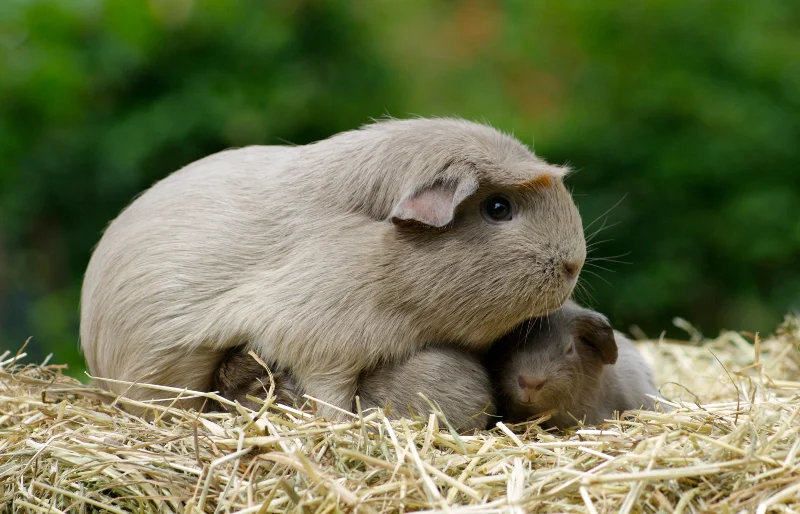
Conclusion
Guinea pigs are unique animals, and breeding them means you’ve got to be prepared for at least a couple of pups at a time. On average, they have 2 to 4 per litter, but these numbers can vary. If you are not planning on breeding, be sure to keep male and female guinea pigs separate from a young age, as they can start breeding from as young as 8 weeks old, and become pregnant again within hours of giving birth.
Despite having relatively small litter sizes, a female guinea pig could, theoretically produce at least 20-30 pups per year if she lives with a boar; that’s a lot of little cavies!
Featured Image Credit: AllaMosurova, Shutterstock


